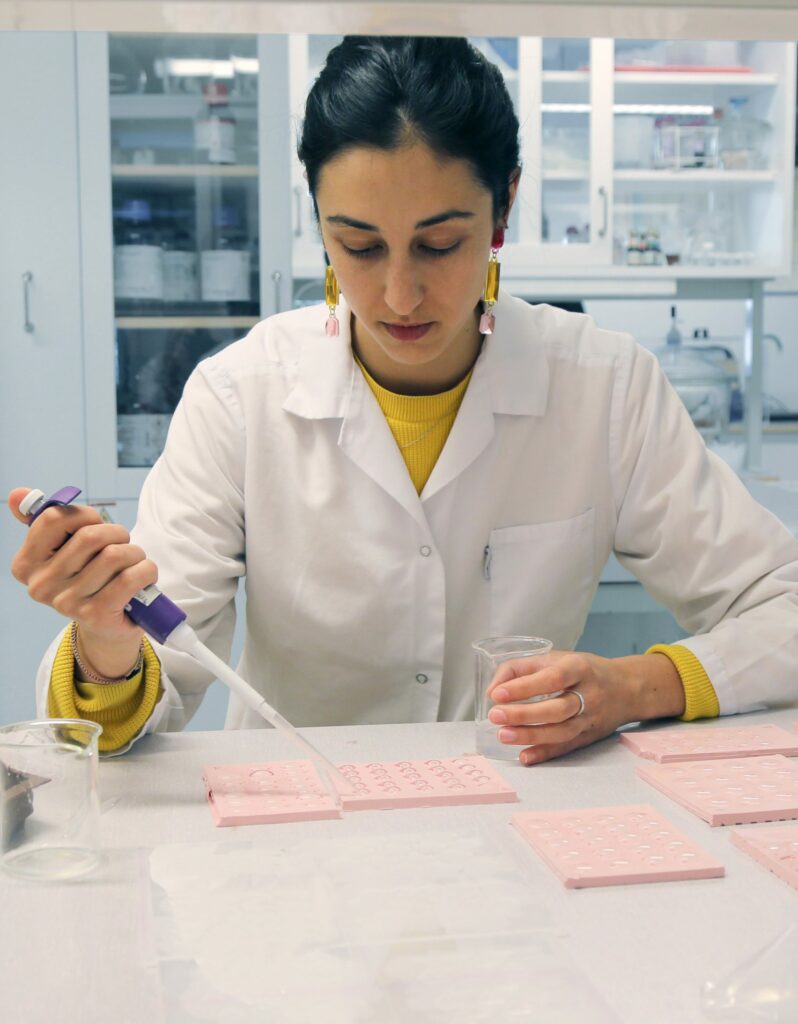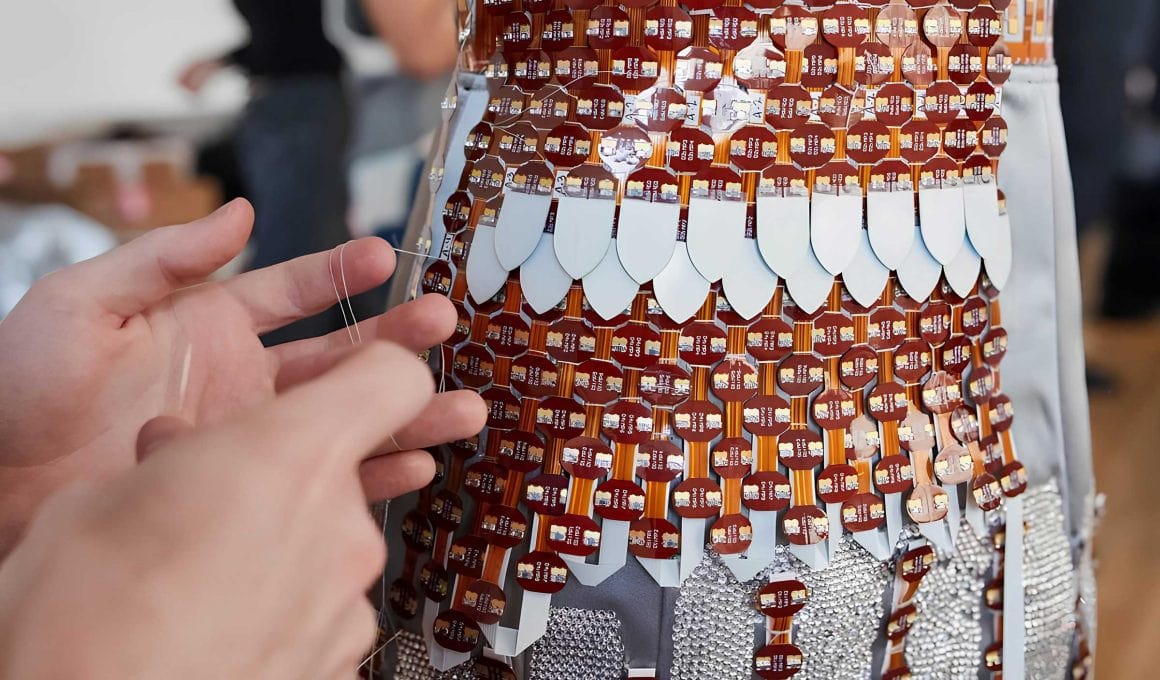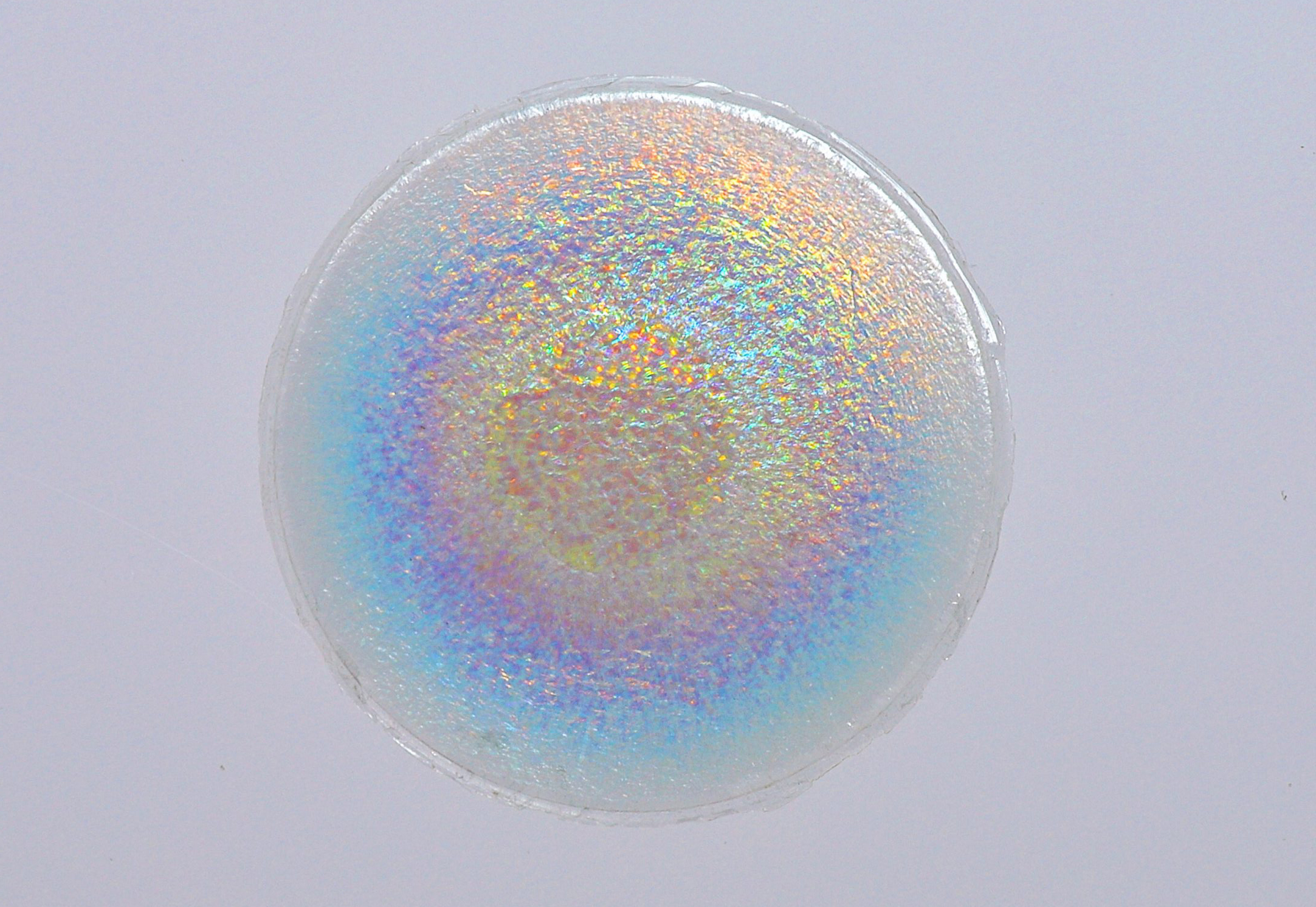
Sequins made of cellulose-based bioplastic
Clothes embroidered with sequins have recently come back into fashion, but there are fears that these plastic decorations are disastrous for the environment. Fortunately, designers are increasingly focusing their research on the creation of sustainable materials to supply to the fashion industry.
“Within the current fashion system, the embroidery industry is limited by unsustainable material options and a lack of innovation,” says designer Elisa Brunato, designer of Bio Iridescent sequins. Instead of using petroleum-based plastic, Brunato developed a way to create sparkling beads made from bioplastic made from cellulose extracted from trees. The designer developed the organic iridescent sequins after speaking with sequin suppliers and discovering that there is always a demand from some fashion brands such as Stella McCartney and the LVMH group (whose brands include Louis Vuitton and Fenty). growing number of sustainable materials.
The Bio Iridescent Sequin is a light and resistant material like plastic, the crystalline form of cellulose refracts the light and makes the sequins naturally shiny, without the need for chemical treatments. The material has very strong bonds and very little cellulose needs to be used for each sequin. “In the future, cellulose could come from anything from fruit peel or algae to used denim or waste paper. Cellulose takes about a hundred years to form, this is remarkably short compared to crude oil, which takes thousands of years to form,” says Brunato.
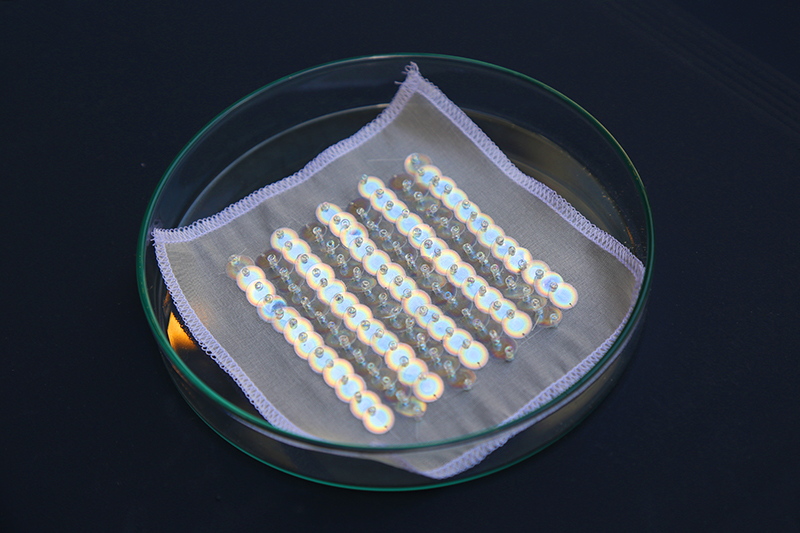
At the moment it takes about a day to make the sequins in the laboratory, putting liquid cellulose into a mold through a pipette; they can be made in different shapes and then sewn onto fabric like traditional sequins or beads.
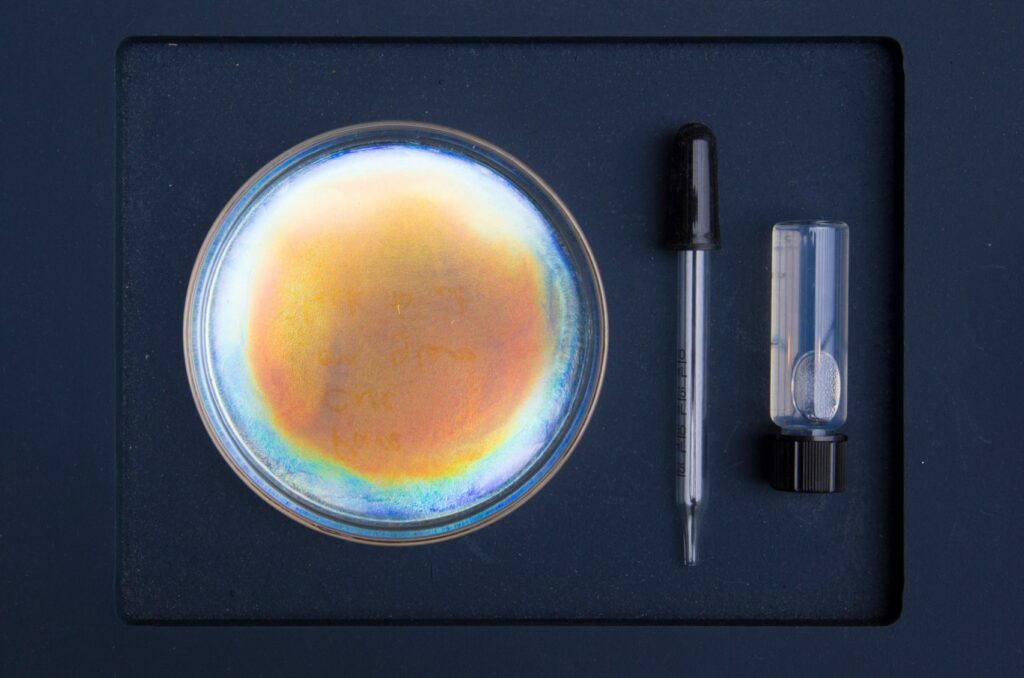
The new material was developed by Elissa Brunato in close collaboration with scientists Hjalmar Granberg and Tiffany Abitbol, from the Swedish Research Institute (RISE). The sequins are currently in development, but Abitol has said that they should be able to be composted after use, although this claim is currently yet to be tested. Next steps therefore include industrial testing to better define their post-consumer performance.
